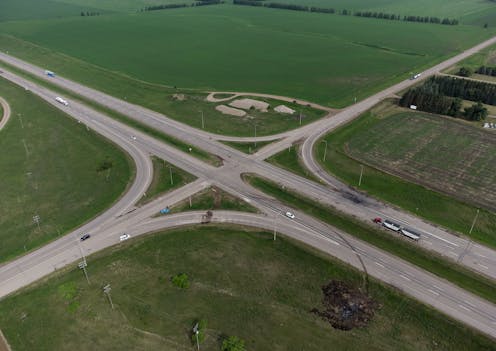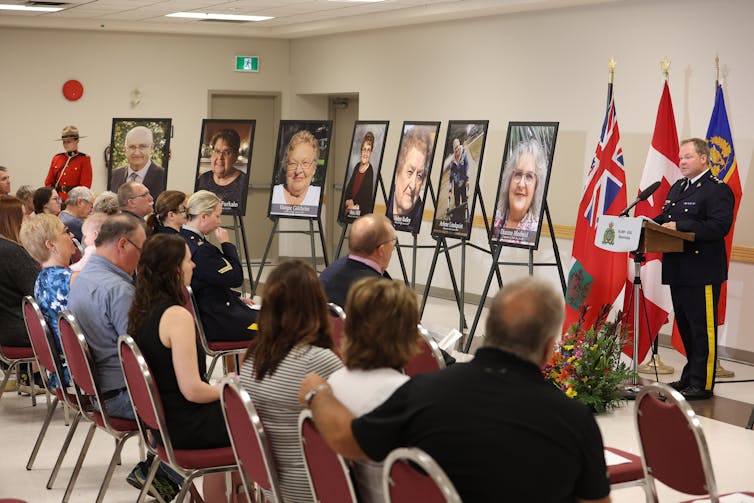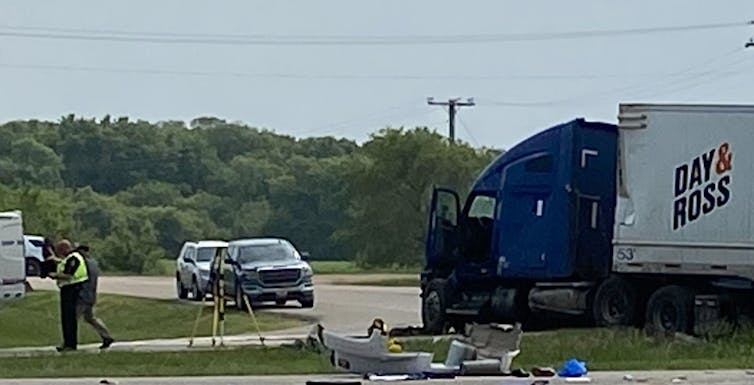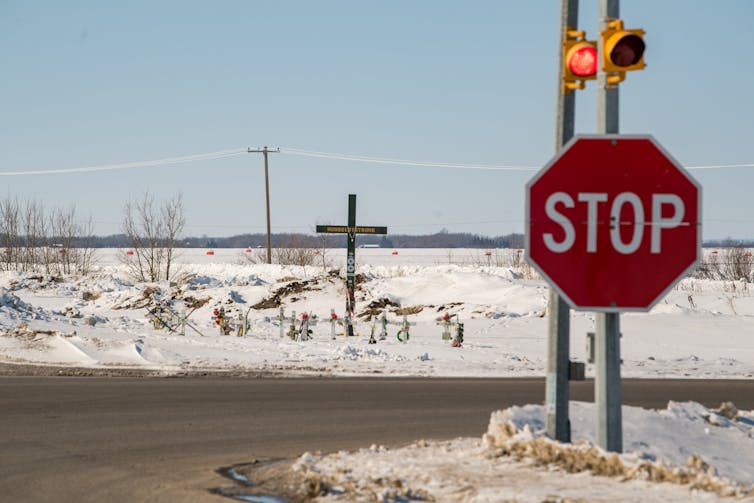
The recent collision between a bus and a semi-truck near Carberry, Man., which killed 16 seniors, is the latest fatal incident to raise concerns about bus and road safety in Canada. The crash shares similarities to other fatal bus crashes like the 2018 Humboldt Broncos bus crash and the 2019 bus rollover on Vancouver Island.
Buses are one of the safest modes of transportation. However, these tragic incidents show that major crashes can result in significant loss of life, severe injuries and profound grief for entire communities.
Safety investigations into such collisions need to be conducted at a national level and by an independent body in the same manner air and rail occurrences are investigated.
Road transportation is a provincial responsibility
When it comes to road transportation, Canada adheres to an archaic regulatory framework that can be traced all the way back to confederation. At the time, John A. Macdonald argued that roads should be a provincial responsibility with no federal involvement or guidance.
At the time, most roads were not paved and road vehicles were horse-drawn. Roads carried less national strategic significance than railroads and waterways which both became federally-regulated.
After confederation, Canada became the second largest country in the world by area, and roads became the lifeline of our transportation infrastructure system. However, roads still remain under provincial jurisdiction and that makes far less sense now.

Improving road safety
Canada’s lack of effective leadership of road transportation is inconsistent with practices in many other developed nations. Improving road safety and standards should include developing national standards, guidance and dedicated funding sources (for example, gas tax) to support the construction and operation of road networks.
In 2018, Canada ranked 12th compared to other member countries in the Organization for Economic Co-operation and Development in terms of road safety.
In 2016, the Canadian Council of Motor Transport Administrators published its Road Safety Strategy. The strategy aims to raise public awareness of road safety as well as improve legislation and infrastructure. However, progress has been slow and often hampered by a lack of systemic efforts to collect, analyze and share publicly relevant data and research.
To fill the gaps, non-mandatory guidance is being developed collaboratively by not-for-profit associations and inter-governmental forums such as the Transportation Association of Canada, the Canadian Council of Motor Transport Administrators and the Council of Ministers of Transport.

Response to major road crashes
In Canada, federal regulations govern transportation by rail, air and water. The safety of the users of these systems are under the purview of a federal watchdog, the Transportation Safety Board (TSB), which is overseen and funded by Parliament. This allows the TSB to investigate all matters related to these modes and to press all levels of government for change.
Roads are the exception. The TSB has no role in investigating road crashes or bridge failures no matter how catastrophic. That is usually left to provincial and municipal authorities. This stands in contrast to other countries like the United States, which empower a national agency to investigate highway safety.
The TSB was absent from the Humboldt Broncos crash, the Columbia Icefield crash, the University of Victoria bus crash, and is absent from the Carberry crash, all because its mandate does not cover roads.
Meanwhile, the TSB joined the investigation into the implosion of the Titan submersible in international waters because the support ship flew a Canadian flag.
The TSB investigated a 2013 double-decker bus crash in Ottawa because the bus collided with a train and rail is a federally-regulated mode, but was unable to investigate another double-decker crash also in Ottawa in 2019 because the bus collided with a station shelter awning on the City-owned transitway.
In both cases, the bus structure proved to be weak and easily breached, which led to ejection of passengers from the upper decks. A public report was issued after the first crash. No report or recommendations were issued after the second, and an opportunity to advance safety was missed.
Best practices dictate that serious road crashes across the country be investigated by an independent body. That would allow us to see the bigger and clearer picture, and to detect trends more accurately. We need this knowledge to justify necessary safety actions such as traffic countermeasures, infrastructure upgrades, stronger bus structures, seatbelts, event data loggers and mandatory bus driver training.
For these reasons, we must demand that serious road crashes be subject to the same type of independent and transparent safety investigations that are routinely conducted in other modes.

Stalled progress
In 2019, on the heels of the Humboldt Broncos bus crash, the House of Commons Committee on Transportation, Infrastructure and Communities studied bus passenger safety. The committee interviewed first-responders, bus industry representatives, the TSB and safety experts.
The committee’s report contained nine important recommendations to improve bus passenger safety. It recommended the Government of Canada enable the TSB to investigate serious highway accidents, as well as all accidents involving motor vehicles designed to transport nine or more passengers. The report also recommended that bus drivers be required to undertake mandatory entry-level training.
The report went nowhere.
Transport Canada did not respond to the report as would normally be expected. The committee was told that Transport Canada was in the process of developing regulatory changes to improve bus passenger safety in collaboration with provincial and territorial governments and needed more time to finalize the work.
Four years later, there has been little progress on the recommendations. The cost of waiting is too high. Politicians continue to offer only thoughts and prayers after each tragic incident, but it is time for them to revisit their own bus passenger safety report.
The House of Commons needs to follow up on the recommendations and demand that regulatory changes be introduced to make bus travel safer.
Ahmed Shalaby receives funding from the Natural Sciences and Engineering Research Council of Canada, Manitoba Department of Transportation and Infrastructure, and the City of Winnipeg. He is a professional engineer and a member of the Pavements and the Soil and Materials Standing Committees of the Transportation Association of Canada. He is a director of Safer Roads Canada, a not-for-profit group created by families of crash victims.
This article was originally published on The Conversation. Read the original article.







